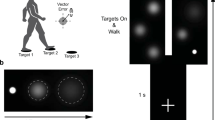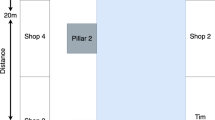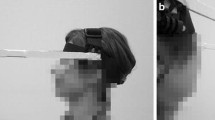Abstract.
Spatial-temporal gaze behaviour patterns were analysed as normal participants wearing a mobile eye tracker were required to step on 17 footprints, regularly or irregularly spaced over a 10-m distance, placed in their travel path. We examined the characteristics of two types of gaze fixation with respect to the participants' stepping patterns: footprint fixation; and travel fixation when the gaze is stable and travelling at the speed of whole body. The results showed that travel gaze fixation is a dominant gaze behaviour occupying over 50% of the travel time. It is hypothesised that this gaze behaviour would facilitate acquisition of environmental and self-motion information from the optic flow that is generated during locomotion: this in turn would guide movements of the lower limbs to the appropriate landing targets. When participants did fixate on the landing target they did so on average two steps ahead, about 800–1,000 ms before the limb is placed on the target area. This would allow them sufficient time to successfully modify their gait patterns. None of the gaze behaviours was influenced by the placement (regularly versus irregularly spaced) of the footprints or repeated exposures to the travel path. Rather visual information acquired during each trial was used "de novo" to modulate gait patterns. This study provides a clear temporal link between gaze and stepping pattern and adds to our understanding of how vision is used to regulate locomotion.
Similar content being viewed by others
Author information
Authors and Affiliations
Additional information
Electronic Publication
Rights and permissions
About this article
Cite this article
Patla, A.E., Vickers, J.N. How far ahead do we look when required to step on specific locations in the travel path during locomotion?. Exp Brain Res 148, 133–138 (2003). https://doi.org/10.1007/s00221-002-1246-y
Received:
Accepted:
Issue Date:
DOI: https://doi.org/10.1007/s00221-002-1246-y




